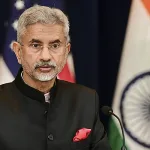In Bandipora, a 27-year-old tribal woman is serving as a cultural guardian by rewriting the narrative of cultural preservation. Shahida Khanam, hailing from Aragam village, has carved out a unique space with the creation of the first tribal museum in North Kashmir, dedicated to safeguarding the rich heritage of the Gujjar community.
In a candid conversation with Rising Kashmir, Shahida shared her journey from being an observer of the distinctive tribal clothing in her community to becoming a driving force for cultural conservation.
Recognizing the dearth of initiatives within the tribal community to preserve its beauty and significance, Shahida decided to take matters into her own hands.
Beyond merely curating traditional artifacts, Shahida has become a beacon of change by imparting formal training in various crafts to local tribal girls. From Sozni embroidery to knitting, tailoring, designing, and crafting traditional jewelry, she is nurturing skills that echo the age-old traditions of her community.
Despite facing challenges, Shahida, armed with determination, has gone beyond the boundaries set by stereotypes. In many tribal communities where women are often confined to traditional roles, Shahida advocates for gender equality. Her mission extends beyond the museum’s walls; it’s about empowering tribal women and challenging societal norms.
Shahida’s museum is a treasure trove, which showcases a diverse array of items that narrate the tale of the Gujjar community. From full dresses, jewelry, and traditional food items to carpets, chairs, ornaments, coins, and earthen utensils, every artifact has a story to tell. Shahida, aware that her work is far from complete, continues to gather more pieces with the help of locals, ensuring that the legacy of her community lives on.
Having completed her Bachelor’s degree, Shahida made a conscious choice to dedicate her efforts to the tribal community instead of pursuing further education. Her decision reflects not just a personal commitment but a broader vision to bring positive change and security to the lives of her people.
The backbone of Shahida’s journey is the unwavering support from her family. In a society where tribal women often face obstacles in pursuing their dreams beyond community boundaries, family backing becomes a crucial pillar. Shahida’s story is not just about establishing a museum; it’s a testament to resilience, breaking barriers, and fostering pride in one’s cultural roots.
Shahida said she continues to weave the fabric of cultural preservation in Bandipora so that her tale resonates as an inspiration for all those who strive to protect and cherish their heritage.
Through her museum, she not only safeguards artifacts but also creates a legacy of empowerment, proving that a single individual can be the catalyst for transformative change, she said.
Shahida’s journey is a celebration of tradition, a triumph over stereotypes, and a commitment to shaping a future where cultural pride knows no bounds.





